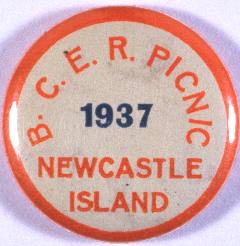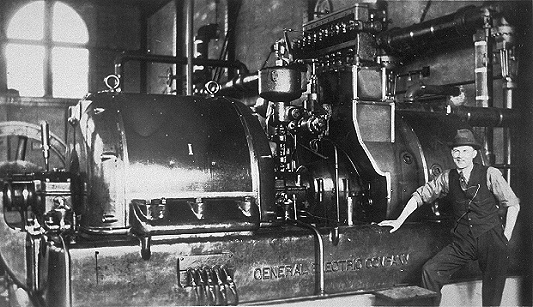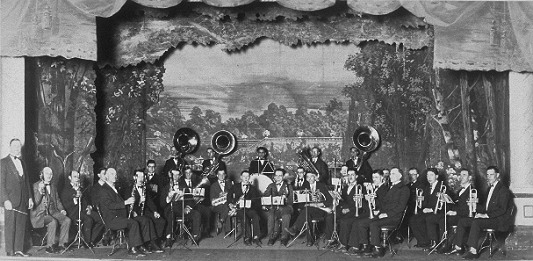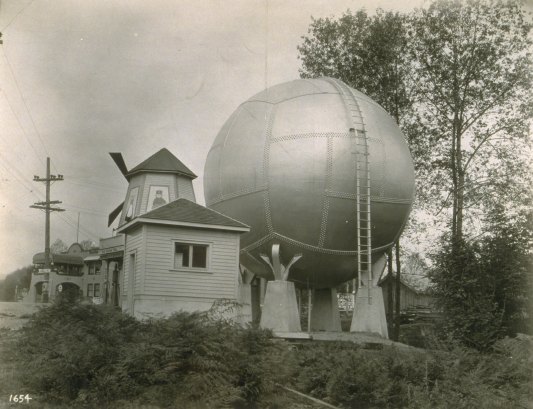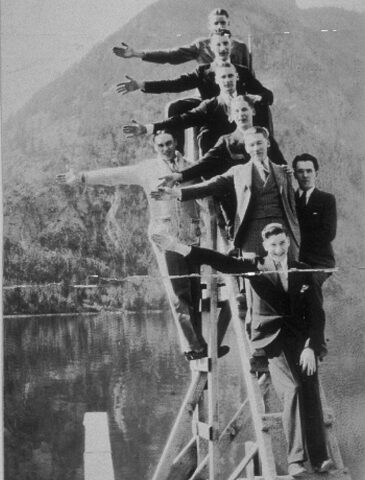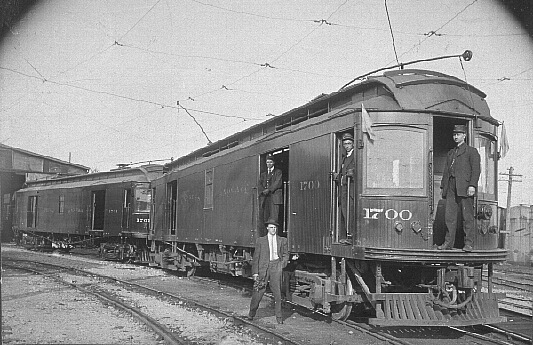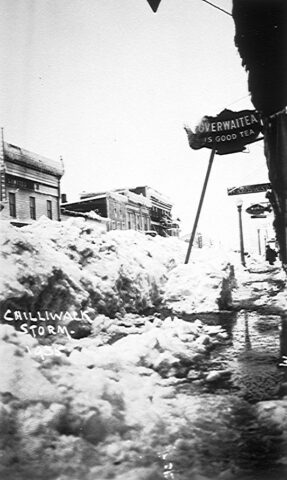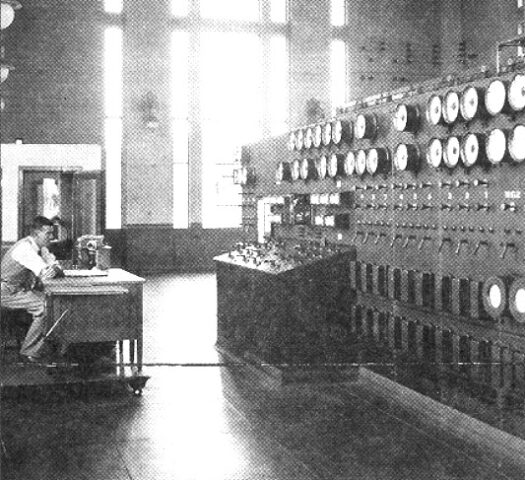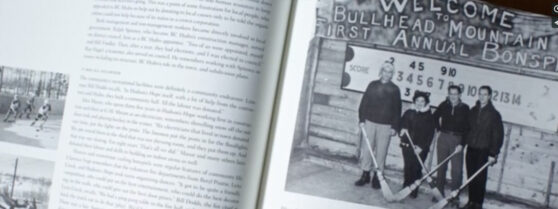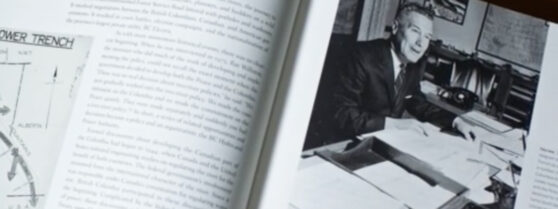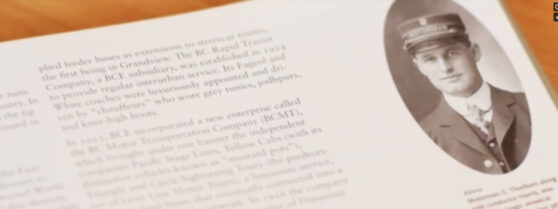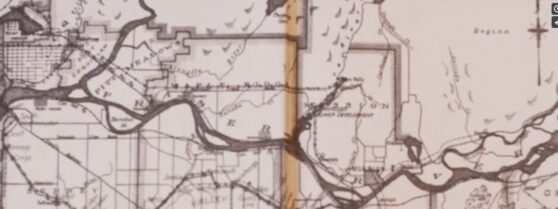Just you
1929-1945
The Hungry Thirties & Years of Heartbreak, Years of Joy
The Hungry Thirties
After the First World War, BC suffered an economic downturn that continued for almost half a decade. It was followed by a recovery that lasted through the 1920s. During these years, life was good and seemed secure. But everything changed in 1929 when the stock market crashed. That year, BCE vice-president W. G. Murrin became president of the company.
By 1931, every part of the provincial economy was affected. As the dominoes fell, company after company went out of business, throwing tens of thousands of people out of work and leaving many dependent on breadlines and soup kitchens. Conditions worsened with the arrival of thousands of unemployed from the other provinces, where the economic picture was even worse. Many families were on social assistance, and scores of relief camps were established in the Interior and on Vancouver Island. Social unrest was rife and there were riots in Vancouver.
The impact was felt across the province and not just in the major centres. George Challenger joined BC Electric as an agricultural specialist in 1935 and retired in1968. In his memoirs he wrote of the “hobos” who rode the rails and stopped off in Kamloops, where he worked for the BC Ministry of Agriculture at the time.
During the early ’30s, when jobs were at a premium, many transients rode the boxcars on both railroads, mostly going west looking for work and a milder climate. They would stop off in Kamloops and other points en route and beg for food, clothing, et cetera from door to door. They made their headquarters near and under the north end of the Red Bridge. You could see their fires burning in the evenings. We called the area “the jungle.”
Ralph Purves, who began working for BC Electric in the mid-1920s, recalls the atmosphere in Vancou-ver at the time and the violence that sometimes spilled over.
I remember in 1938 there was a very big meeting at the old post office at Hastings and Granville [now the Sinclair Centre], which was raided by the police. It was just brutal to watch. Oh yes, I saw a lot of police beating the people up.
Hans Olsen was a construction tradesman who was one of the men at that “meeting”- actually a week-long occupation. His son, Norman Olsen, who worked for the BC Power Commission and BC Hydro from 1946 to 1994, has particular reason to remember his father’s experience.
The Vancouver police, under Chief of Police Colonel W. W. Foster, stormed the downtown post office and forced out the rioters. Many injuries occurred and Foster’s name was hated. Fifteen years later, Foster (by then a major-general) was named a commissioner of the BC Power Commission along with Forrest Shaw and Sam Weston. Foster was responsible for labour relations and personnel, and he was instrumental in hiring myself and seven other UBC graduate engineers in 1946. General Foster and I never agreed on union questions, and at a managers’ conference in 1950 he requested managers to persuade our employees against unions. I refused to do so and made an indiscreet, impassioned speech against his direction and stated that, in my opinion, management received the kind of labour relations it deserved. He never again spoke civilly to me.
BC Electric provided services to the Lower Mainland and Southern Vancouver Island. Although these two areas constituted just a fraction of BC’s land base, they contained about 90 percent of the province’s population. This put the company in a position of great influence and prominence, but this profile came with public expectations and responsibility.
As a private company providing public services, BCE was obliged to keep the electricity and gas flowing, the streetcars running, and the freight moving. And the company also had to keep its shareholders happy. There was also a human side to this responsibility: many families depended on the company.
Reconciling these interests was a tall order. BCE’s business suffered during the Depression as industrial customers closed down and households saved money by conserving power. Both Vancouver and Victoria had unused capacity in their power systems. The most significant events in power generation during this period were the purchases of small utilities on Vancouver Island and in Kamloops.
Urban and interurban ridership dropped 20 percent between 1929 and 1933, and no wonder. People walked everywhere because they couldn’t afford the price of a streetcar ticket. Freight tonnage plum-meted 60 percent. Yet throughout the Depression most BCE employees were relatively secure.
Guy Barclay started with BC Electric in Victoria near the end of 1931 and stayed with the company for 38 years. A mechanical engineer by training, he was hired to do electrical detective work, tracking down people who were bypassing the metering system and stealing electricity. Guy was a highly skilled employee, but even his job was not secure and he had no prospects of advancement.
In the spring of 1932 I started assembling equipment to install a new generator in the Port Alberni power-house. In those days, BC Electric served some little places on the Island like Port Alberni, Parksville, Qualicum, and Royston. I had a crew of two. The diesel generator came down from Bridge River, where it was used in the original plant that had started and then folded up during the Depression. My job wasn’t to install the generator itself but to join the connections from the generator to the equipment I brought in. That meant doing an electrical splice, and I had never done this. I wrote my boss in Victoria and said, “I am not sure I can do this properly.” He sent me a pamphlet and said, “If you have trouble putting the lid back on, get the plumber from the city, who is good at that kind of thing.”
During the Depression the company was loath to lay you off. On the other hand, you tended not to advance. For my next job, I came back to the Victoria meter shop where I was testing meters, putting them in, and taking them out. I was also used as a station operator when someone went on leave or got sick at generating plants such as Goldstream and the Bay Street substation. I did this off and on for seven years, or until the Second World War.
One of Guy’s crew of two was a young summer student named Rolland Horsey, whose father, E. N. “Ted” Horsey, had started with BCE in 1910 and became a highly regarded engineer in Victoria. During the devastating ice storm of 1935 he was an exemplary leader under arduous conditions. Rolly did various summer jobs during the early Depression years, starting in 1932, including helping paint the Victoria gas holder and working as helper at Jordan River.
By 1933, about 30 percent of the Canadian labour force was unemployed. Ralph Purves remembers the human drama that BCE employees often witnessed from their office windows at the corner of Carrall and Hastings Streets.
The labour market was relatively good until 1929 and the Depression. After that it got very, very difficult. In the mid-’30s there were protest marches on Hastings Street. What could people do? They had no money. People were relying on handouts or help from relatives. A lot of people-married people included-were living on $65 a month.
At BC Electric, we were relatively secure. There was very little layoff in the office staff, and I don’t think there was a great deal of layoff in electric or gas. Those services are pretty vital. We really didn’t have direct competition. There might have been some from sawdust-burning stoves, but, really, the company was secure. It was providing three very essential services at that period: electricity, gas, and transit.
At first, BCE stopped hiring new staff. Later, the loss in revenue called for more painful measures. John Purchas, who began working for BCE as an office boy in the late 1920s, felt their impact but was quickly made to understand his fortunate position.
About 1933 or ’34, I was getting $80 a month. I remember I went in to see my boss Mr. Horner once and asked if I could get an increase. He looked down the street and he said, “John, there’s ten men down there who would come and work your job at less than what you are making.” He wasn’t trying to be mean. He said, “That goes for me, too.”
It was tough. I got a five percent cut, from $80 to $76. The cuts were five percent if you were making under $100 monthly and seven-and-a-half percent if you were getting from $100 to $150. I didn’t know anybody getting over $150.
People often couldn’t pay their bills, and the company had special collection for people who knocked on doors. I couldn’t really tell you if they made compassionate allowances during the Depression, when people didn’t have money. I know they went after it. If you had a job, they’d garnishee.
Jack Edwards joined BC Electric in 1938, near the end of the Depression, and retired in 1968. Like so many others, he had struggled to stay employed during the 1930s. Jack found and lost a number of jobs before a lucky encounter with a well-known BCE supervisor.
You couldn’t buy a job. I spent two years up in the Yukon, 1935 and 1936, working on gold dredges because there wasn’t any work down here. I borrowed $100 to go up there. It put my wife and me on our feet.
I did several things after I came back from the Yukon. I got on the provincial police force as a probationary officer. This was just before the start of the war, and we were doing guard duty. It wasn’t much of a job. I was going to town one day on the streetcar from Marpole and I met Malcolm MacIntyre, a chief supervisor on the streetcars. He knew me because I played soccer at Callister Park, for first-division soccer, and I lived a block from him. I sat down and said hello, and he came over and said, “How about you come work for us?” I said, “No, I think I’ve got a good job, Mac.” He says, “No, you come and work for us.”
In those days, if you could get on with the BC Electric Company, you were home free. They were a respected company. I went down to the BC Electric for a little IQ test and that was it. I became a streetcar motorman. You worked seven days and you got a day off. I started at 54 cents an hour. And in those days we needed it. When you were starting a home and you were paying a mortgage, you needed every penny you could get. But I enjoyed working for the company. I’m tickled to death that Mac asked me to work for him. It hit me right at the right time.
Beyond BC Electric territory, a variety of smaller producers struggled even harder to make it through the Depression.
In 1935, after looking for a long time, John Easterbrook finally found work in Nanaimo with Nanaimo Duncan Utilities, which would later become part of the BC Power Commission (and eventually BC Hydro). John retired from Hydro in 1978. The labouring jobs he got in 1935 paid about 40 cents an hour, but work was sporadic and he never knew how long it would last. John remembers standing in line every day to see if he could get a job.
I used to take my bucket down to the old NDU warehouse on Fraser Street. Old Ben Griffiths or somebody would come out and say there was no work today, and I’d take my bucket home again. I didn’t get on permanent until Bill McGregor went to reading meters and I got his truck. It was said that it was easier to get hired on if you drank beer with Ben Griffiths, but I didn’t have enough money.
The line room was on Fraser Street when I first started, and the powerhouse was on Caledonia. When they built the Westwood Lake Dam, the water came down the pipeline, right down to the generating station, a little building down the bottom of Westwood Lake Road, and that turned the turbines. Dick Alexander was the engineer.
It was a wood pipeline. I helped build it. Once they covered it up with a small Cat or something and broke a hole in the pipe. The only way they could fix it was with red lead, and I had to go down in the goddamned pipe to do it. Crawled down about 500 yards, maybe more than that. I had to spread lead down there.
Although the economic situation improved towards the end of the 1930s, the unemployment rate was high until the hostilities broke out in Europe. For many people the Depression lasted 10 years. Al Jackson of Nanaimo has strong memories of his family’s joy when his dad, Bill Jackson, finally found work with Nanaimo Duncan Utilities.
I can remember him being laid off at Number One mine in Nanaimo, which was the major mine operation here. That was about 1936. He found some work for a while, but then he got laid off again and was on relief. He took his third-class steam ticket during that period of time when he was off work and applied for a job at a number of places. In 1939, much to the relief of my family, he got taken on at the local plant at Millstream. And that was like a cheque to paradise for the family, because it brought stability back.
Years of Heartbreak, Years of Joy
The era that began with the Great Depression in 1929 and ended with victory in Europe and Japan in 1945 was an emotional roller coaster for those who lived through it. It truly was the best and the worst of times. These 15 years changed the world and the lives of virtually all Canadians. First, there was the stock-market crash of 1929, followed by the “Dirty Thirties” with their massive unemployment marches, riots, and widespread human suffering. A brief period of economic improvement came next, followed by the desperate early days of the Second World War. Fortunately the tide turned, the war was won, and a period of boundless optimism emerged.
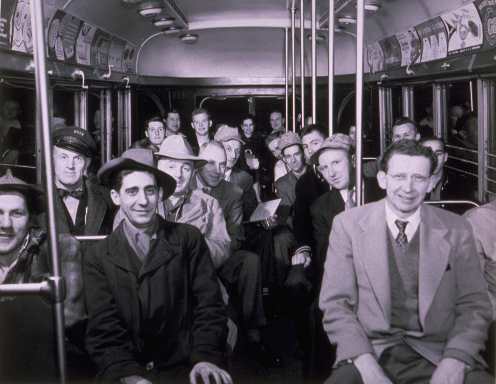
The very first of the one-operator President’s Conference Cars -PCC’s – arrived on the scene in late 1938. The Street Railway Union objected to them because they “put conductors out of work” but these BCE employees, and the public, clearly loved them.
In some ways, the fortunes of BC Electric and its employees reflected what was happening elsewhere in the country during the Depression. The company lost a great deal of its core business, and expansion plans were put on hold. Some people lost their jobs; almost everyone had their wages reduced. Many employees went to war; some didn’t return. New workers replaced those who served in the military, and many women were hired to do “men’s work.” These replacement workers were themselves often replaced by returning veterans after the war.
In other ways, the company bucked national trends. A job with BCE was more secure than most because of the vital role electricity and transportation played in both the provincial economy and the war effort. BCE employees were in a good position to get through tough times.
BC Electric didn’t grow much during these years as it worked hard to keep itself solvent and its staff employed. But, the company became much better at selling itself and its products. It was during these 15 years that BCE became part of most city dwellers’ lives and, some would argue, part of the province’s cultural landscape. By the end of the Second World War, BC Electric was set to take a leading role in developing BC’s potential, and it had a $ 50-million plan in place to make that happen.
The Bridge River project was slated to get underway again and an expanded workforce was knocking at the door. Public transportation was already changing dramatically as populations grew and buses and trolleys became more prominent. More people meant more customers for more services from companies like BCE. Rapid industrial growth put demands on the company that it had never experienced before.
The Depression and the Second World War years served as a bridge between an older age and a distinctly modern era. BCE managed to survive, prosper, and emerge ready to meet the inevitable challenges of providing power and transportation to more and more people.
